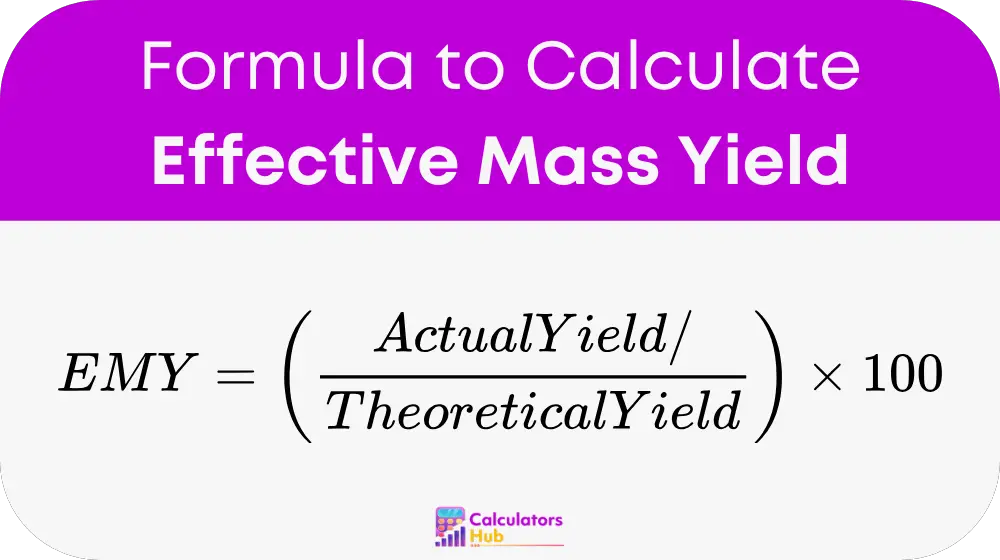The Effective Mass Yield Calculator is a simple but powerful tool used to determine how efficiently a process or chemical reaction converts raw materials into the final product. It calculates the percentage yield by comparing the actual mass of the product obtained with the maximum mass that could have been produced.
This calculator belongs to the Process Efficiency Calculators category. It is commonly used in chemical manufacturing, pharmaceutical production, food processing, and any industrial process where mass input and output need to be optimized. By using this calculator, industries can track performance, reduce waste, and improve cost-efficiency.
formula of Effective Mass Yield Calculator

Variables:
- EMY:
Effective Mass Yield — a percentage that shows how close the actual output is to the expected maximum output. - Actual Yield:
The mass of the product you actually obtained after the process, in grams (g), kilograms (kg), or any mass unit. - Theoretical Yield:
The calculated maximum mass of the product you should have received based on chemical equations or process design, in the same unit as the actual yield.
Note: The result is always expressed in percentage (%), showing the effectiveness of the process.
Reference Table: Common Effective Mass Yields in Industry
Here is a quick-reference table that includes approximate yield ranges seen in various industries. These are typical values and may vary based on equipment, purity, and conditions:
| Industry/Process | Expected Yield Range (%) | Notes |
|---|---|---|
| Pharmaceutical synthesis | 70–90% | Purity and regulatory control needed |
| Organic chemical reactions | 60–95% | Depends on reaction type and efficiency |
| Petrochemical refining | 80–98% | High efficiency due to scale |
| Food processing (e.g., oil extraction) | 60–85% | Depends on raw material quality |
| Lab-scale academic experiments | 50–90% | Often lower due to learning conditions |
This table helps users compare their process efficiency to industry norms and spot potential improvements.
Example of Effective Mass Yield Calculator
Scenario:
A chemical lab conducts a reaction expected to produce 120 grams of a product (theoretical yield). However, the actual mass collected after the process is 90 grams.
Step 1: Use the formula
EMY = (Actual Yield / Theoretical Yield) * 100
EMY = (90 / 120) * 100 = 75%
Result:
The effective mass yield of the process is 75%, which means the lab recovered 75% of the expected material. The rest may have been lost due to side reactions, evaporation, or handling.
Most Common FAQs
A: It helps evaluate how efficient a process is in converting inputs into outputs. Higher yields mean less waste, lower costs, and better productivity.
A: No. If it appears that way, it's likely due to measurement errors, contamination, or inclusion of impurities in the product mass.
A: Theoretical yield is the calculated maximum amount based on ideal conditions. Actual yield is what you really get after the process, which is often lower due to practical limitations.